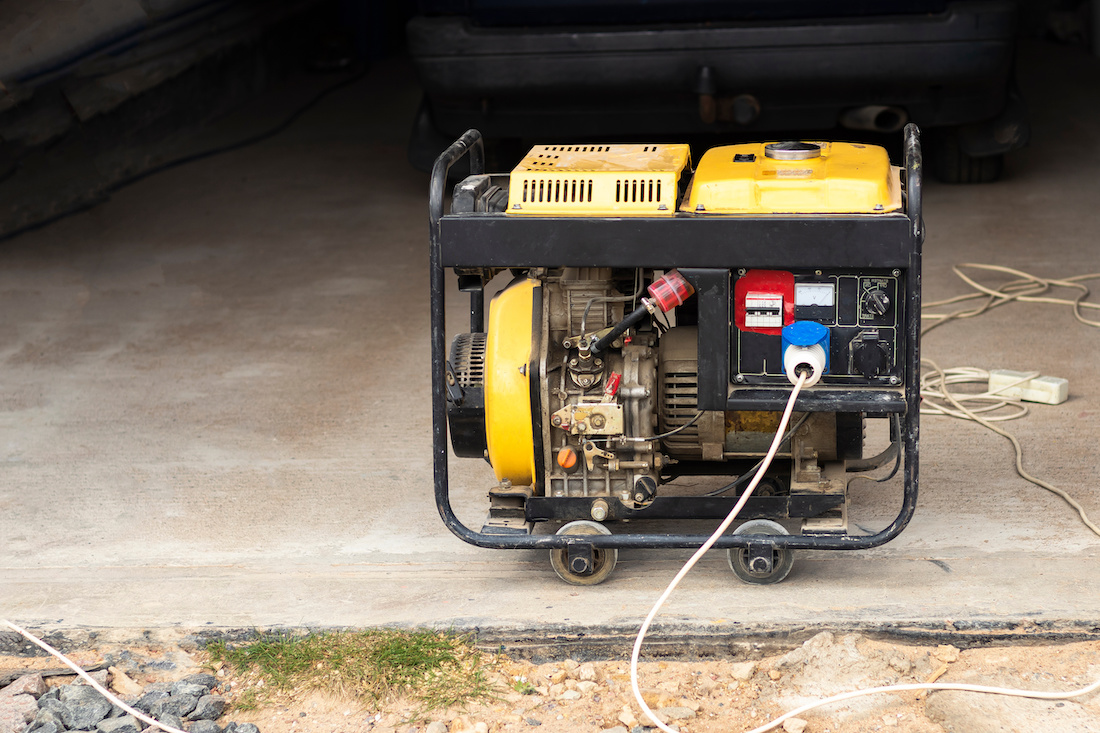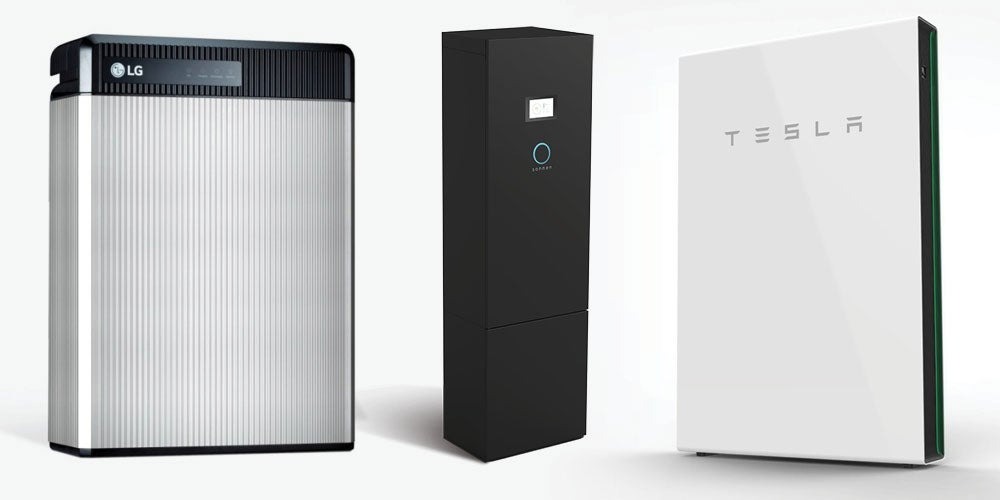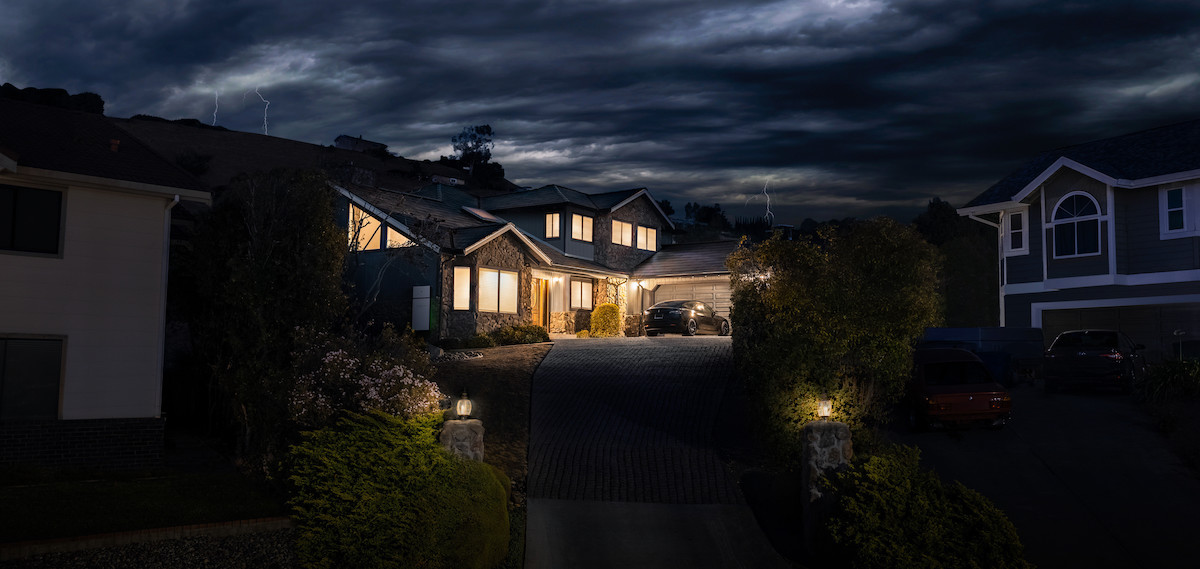Updated 3 months ago
What happens if you have solar and the power goes out?
Written by Ben Zientara Ben ZientaraBen Zientara is a writer, researcher, and solar policy analyst who has written about the residential solar industry, the electric grid, and state util...Learn more , Edited by Catherine Lane Catherine LaneCatherine has been researching and reporting on the solar industry for five years and is the Written Content Manager at SolarReviews. She leads a dyna...Learn more

Why you can trust SolarReviews
SolarReviews is the leading American website for solar panel reviews and solar panel installation companies. Our industry experts have a combined three decades of solar experience and maintain editorial independence for their reviews. No company can pay to alter the reviews or review scores shown on our site. Learn more about SolarReviews and how we make money.
So you’ve got some shiny solar panels on your roof and you’re making a lot of your own electricity. Your power bills are nearly eliminated and you’re feeling like an environmental champion. Then one windy night, a storm blows down a huge tree on your block and the power goes out. When the morning sun shines over the horizon, will your refrigerator be running? Probably not.
If you have solar and the power goes out, your power will go out, too—unless you have a backup system. This is because U.S. electrical code requires rapid shutdown of a solar system to protect emergency workers and prevent dangerous backfeed current from passing onto distribution lines.
To keep your power on in a blackout, you need a solar inverter that can remove your home from the grid, along with a generator or battery for longer-term energy needs. By creating your own little “island” of a home with solar panels and batteries, you can run essential appliances for days during a power outage.
Read on to learn more about how to keep your home running during a power outage.
Why don’t solar panels work in a blackout?
Most homeowners with solar on their homes have what is called a “grid-tied” solar system, which means the panels are connected to an inverter.
The inverter is connected to the main AC panel in the house and to a special smart electric meter that records both energy you use from the utility company and energy sent to the grid by your solar panels. Grid-tied solar systems work without any battery backup equipment.
That’s why home solar people generally say “the grid is your battery.” When your solar system produces excess energy, you’re sending it out to your neighbors and getting credit for it (under net metering), but when the sun goes down, you still need grid power from the utility company. If you play this balancing act just right, you can have a power bill near $0.
In the event of a blackout, a typical grid-tied system has a special automatic shut-off in order to prevent that extra energy from being sent over possibly-damaged power lines. It’s a safety feature intended to protect the line workers who go out to fix things when they break.
But that also means your house doesn’t get the solar power, either. In a blackout situation, the power from your solar panels goes nowhere - unless you have some way of storing the electricity (with a battery) or otherwise cutting your system off from the grid.
In this video Will White explains what it takes to ensure you have power with solar during an outage:
How can you use solar power to survive a power outage?
If you want to keep your home up and running when the power goes out, there are a few ways to do so:
Use a backup gas generator
Add solar batteries to your system
Use a solar-powered generator
Replace your inverter with a Sunny Boy or Enphase Ensemble system
1. Backup gas generator
We solar-lovers don’t generally advocate burning things to make power, but the cheapest way to make sure you’ve got backup power in the event of a blackout is to buy a generator.

Image: sir270 - stock.adobe.com
For around $1,400 — plus the cost of fuel and installing an external electrical plug — you can get a 9,000-plus-watt gas generator that can mostly run your whole house while the utility workers bring the grid back online.
With your generator and some fuel, you can usually outlast any prolonged outage of the grid, and even help a neighbor out if you need to. Your solar panels will remain off until the grid comes back up, but at least you’ll have power.
Cons of a backup gas generator
Gas generators tend to be loud, smell bad, and create all kinds of pollution from their use. Can you imagine the sound and smell if you and your ten closest neighbors all run your generators at the same time?
There’s also the risk of a fire starting due to stored fuel igniting or burning up when you refill near the hot metal parts of a long-running generator, which certainly doesn’t help matters if your power gets shut off because of increased fire risk.
Of course, cleaner generators exist, running quieter on diesel or natural gas, but the price goes up very quickly for anything more than the basic version. Also, events during the Texas power outage in February 2021 show how natural gas can also be a very unreliable fuel, at least in blackouts caused by winter weather.
Bottom line: generators are not a great option other than their low cost. Let’s look at some purely solar options, including so-called solar generators, in the section below!
2. Solar battery
For true peace of mind during a power outage, you can’t beat a solar battery system.
There is nothing quite like the feeling of being the only house on the block with the lights on after the grid goes down—although the more altruistic among us would prefer that all our neighbors had the same luxury. With a solar battery, the transition from grid to battery backup power is seamless and reassuring.
Many options are available, from a bank of deep-cycle lead acid batteries to the sleek, easy-to-use lithium-ion batteries. These days, solar installers have lots of expertise installing batteries alongside solar installations, and you might be surprised at the number and variety of Powerwall alternatives in the marketplace.

The cost of installing solar batteries can be pretty high. At $15,500 fully installed, the price of a Tesla Powerwall is one of the lowest on the market.
There are a few Powerwall alternatives that offer similar or better performance and design flexibility than Tesla, but they usually can't compete on price. You can find some of our picks for the best solar batteries to get an idea of more options.
Unlike solar without batteries (i.e. a grid-tied solar system), a solar-plus-battery installation keeps your power on by “islanding,” or disconnecting itself from the grid when an outage is detected. While the blackout remains in effect, your little solar island will charge the batteries during the day and discharge them at night. As long as you have enough battery capacity, you could keep running like this through a very long power outage.
3. Solar generator
If you’re not quite ready for the multi-thousand dollar commitment of a whole-house solar battery, there are also “solar generators” from companies like Renogy and Goal Zero available for a few hundred dollars that can at least keep your food cold and a space heater running.
Just keep in mind that these portable options can be charged with or without solar panels while the grid is up, but again, they won’t charge from solar when the grid is down without the same kind of special equipment used for a full solar-plus-storage system.
Learn more: Pros and cons of solar generators
4. A special inverter or inverter system
Luckily, there is a way for a homeowner with solar to use the energy their panels make without a connection to the grid or an energy storage setup.
SMA and Enphase are two companies that make special solar inverters that are designed to automatically disconnect from the grid in the event of an outage, while still providing power to your home from your solar panels.
SMA Sunny Boy Secure Power Supply
While most solar inverters have that automatic shut-off we discussed above, SMA Sunny Boy inverters can be installed with a special circuit that allows homeowners to switch over to pure solar power after a power outage.

The Sunny Boy inverter can only produce up to 2,000 watts of “opportunity power” at a time, and it’s designed to shut down if the power draw is too great. Note, it only works if the sun is up.
2,000 watts might sound like a lot (20 100-watt light bulbs!), but it probably isn’t enough to start an air conditioner. Opportunity power is designed for essential appliances only. Realistically, you can probably plug in your fridge and a lamp along with a TV and your smartphone to keep you company.
The total cost for the Sunny Boy and the outlet might be $1,000 more than another brand of inverter without the backup feature. But factored over a 10-year span (the life of the inverter), you might find this an attractive option.
Enphase Ensemble
Another company that has put a lot of work into making solar work when the grid goes down is Enphase. The company’s Ensemble energy management system works together with its microinverters to provide “grid-agnostic” solar power. That means it can send power to your appliances from your solar panels as long as the sun is shining brightly enough, even without batteries.
Of course, Enphase would much prefer you purchase its energy storage solution along with the Ensemble system, which would mean your home could operate during all parts of the day from stored solar energy. And if you’re willing to pay several thousand dollars extra for Enphase’s IQ7 microinverters and the Ensemble system, you might be willing to drop an extra couple G’s for the battery.
How reliable are solar panels?
The reliability and lifespan of solar panels is excellent, according to a recent study by NREL. The researchers looked at 54,500 panels installed between 2000 and 2015. They found that each year, a scant 5 out of 10,000 panels failed.
That means that solar panels have a failure rate of only 0.05%. When you consider that the modern manufacturing process is more advanced than it was back then, you can be confident that the current failure rate is even lower!
Solar panels’ high level or reliability allows solar panel manufacturers to offer power output warranties of either 25 years or 30 years. In other words, the odds of your solar system experiencing failures is extremely unlikely. And if it does happen, you’ll be covered by the warranty and the panel will be replaced free of charge.
Will solar power be a reliable source of energy for my home?
Since solar panels depend on the sun they won’t be much good at night and will produce less energy depending on the season. Luckily, there two easy ways to overcome this obstacle:
Net metering: A law known as net metering requires utilities to compensate those who export excess solar power to the grid. In most cases you will be credited at the same rate you purchase power at on a cents per kilowatt-hour basis.
Batteries: Your solar panels will charge your batteries throughout the day and at night the batteries will power your home.
In most cases homeowners elect not to install batteries with their solar system. This is because net metering allows you to harness the economic value of your solar energy without the large financial investment in batteries.
It’s hard to overstate just what an amazing incentive net metering is. It gives you the benefit of 24/7 grid connectivity while allowing you to sell surplus solar production during the day, canceling most or even all of your power bill.
Why not go off-grid?
People who want to get off fossil fuels completely and ensure that only clean energy passes through their wires might be tempted to go off-grid completely. And that certainly is an option, but it can be a very costly one.
Though going solar has never been less expensive than it is now, it’s still a financial commitment - and choosing an off-grid solar setup can get very expensive. Even a small off-grid solar system with battery storage will cost many thousands of dollars more than a grid-tied system, simply because the hardware needed to make it all work costs so much.
In addition, off-grid battery storage needs to be able to provide the correct amount of electricity you might need over the course of three cloudy, snowy days during the coldest part of the winter wherever you live. It’s overkill in the sunnier months, but you don’t want to get caught without enough power, and then have to resort to a fossil fuel generator. That puts you right back at square one.
Key takeaways
A typical home solar installation is designed to shut down during a power outage to protect utility workers and prevent the grid from running at low efficiency.
To keep power on during a blackout, add a backup generator, solar batteries, or a new kind of solar inverter that can offer some power to keep essential appliances running.
Each of the options listed above has tradeoffs. The cheapest options are dirty and polluting, while the best options are pretty expensive.
Nothing beats the peace of mind of whole-home battery backup. There are many options to choose from, from the Tesla Powerwall to batteries from sonnen and LG.
Ben Zientara is a writer, researcher, and solar policy analyst who has written about the residential solar industry, the electric grid, and state utility policy since 2013. His early work included leading the team that produced the annual State Solar Power Rankings Report for the Solar Power Rocks website from 2015 to 2020. The rankings were utilized and referenced by a diverse mix of policymakers, advocacy groups, and media including The Center...
Learn more about Ben Zientara